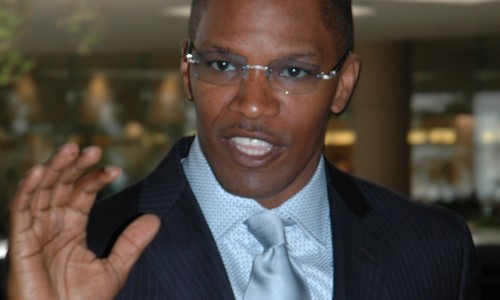The body that hands out the Oscars has announced its biggest ever list of film industry professionals invited to join the organisation – in its first step towards meeting its new targets on diversity.
A number of high profile black film-makers boycotted this year’s Academy Awards to protest against the fact that for the second year running, all twenty of the acting nominees were white.
The President of the Academy of Motion Picture Arts and Sciences, Cheryl Boone Isaacs – a black woman – announced a raft of measures to “double the number of women and diverse members” by 2020, and this list is the first indication of how the programme is coming together.

The black British actors Idris Elba and John Boyega are among nearly seven hundred people invited to join the Academy this year, alongside the Harry Potter actress Emma Watson, Love & Friendship‘s Kate Beckinsale, Sarah Gavron – the director of last year’s London Film Festival opener Suffragette, and Amma Asante, whose A United Kingdom will be opening this year’s London Film Festival. The list also includes British actors Tom Hiddleston and Andrew Garfield and a number of black American actors, such as Dennis Haysbert, Chadwick Boseman and Vivica A Fox. The star and director of a film seen by some as the victim of a snub at this year’s Oscars, Creed – Michael B Jordan and Ryan Coogler – are also on the list.
In recent years, the number of people invited to join the Academy has ranged from 134 in 2009 to 322 last year, but this year, invitations have been extended to 683 people working across the industry. And while 22% of last year’s new members came from ethnic minorities, this year that figure has risen to 41% and the proportion of women invited to join has risen from 27% to 46% over the past year.
But with the Academy starting 2016 with 6261 members, the new membership will go from 25% women to 27% women, while the proportion of ethnic minority members will rise from 8% to 11%, suggesting that the Academy has a long road to travel to bring about any degree of parity.
However, there are questions about what parity should be sought. Should the goal be 50%-50% male/female, since that’s not the proportion of people working within the industry and if that’s the problem, would it be more useful to try to tackle that statistic? And should the goal be 50%-50% white/non-white, should it be broken down into the specific proportions of the different ethnicities within the industry as a whole or indeed the wider population?
And is it right to change the make-up of Academy by actively searching for women or people from ethnic minorities who might not previously have reached the standards of excellence for entry, which used to be categorised by – among other things – Oscar wins or nominations? The latest list includes many film industry figures who while familiar faces – such as actors Luis Guzmán, Anthony Anderson, Morris Chestnut, Michelle Rodriguez, Eva Mendes and America Ferrera – might not otherwise be worthy of Academy membership were it not for the colour of their skin – and that’s less to say they’re not up to scratch than to ask “why now?” Similarly, others on the list, such as the acclaimed Guatemalan Oscar Isaac, might have been invited in the years ahead anyway, on receiving Oscar nominations, leaving the Academy unable to honour them in that eventuality.
Inviting people who might not necessarily meet the previous levels of excellence or people who might well have been invited anyway in the future could ultimately jeopardise the credibility of the organisation that bestows the industry’s most prestigious awards and reduce the pool of potential members in future years, making it even harder for the Academy to keep up the momentum and reach its targets without compromising its reputation.

And consider that in recent years, films such as 12 Years a Slave, Precious, Dreamgirls and The Help have received multiple nominations for black actors, 2007 saw wins for Forest Whitaker (beating Will Smith) and Jennifer Hudson (whose fellow nominees included actresses from Mexico and Japan) and nominations for Eddie Murphy and Djimon Hounsou, while in 2005, Jamie Foxx beat Don Cheadle to the Best Actor Oscar, Morgan Freeman beat Jamie Foxx in the Best Supporting Actor category and there were also nominations for Catalina Sandino Moreno and Sophie Okonedo. With this being the case, it’s perhaps not unreasonable to question whether the make-up of the Academy itself bears any relevance to the colour of the skin of the Oscar nominees – which is less of a comment on the state of the industry than the diversity of those working in film more widely. Ultimately, if there was a sense that the Oscar nominees looked more like the people who went to see their films, would anyone even worry about the make-up of the body that awards them?
